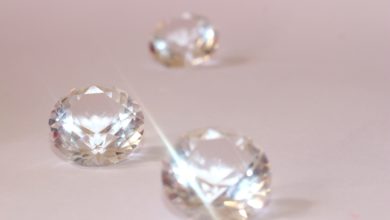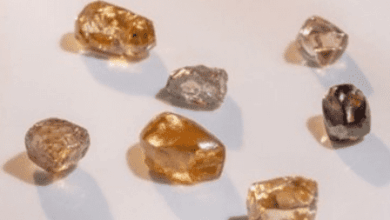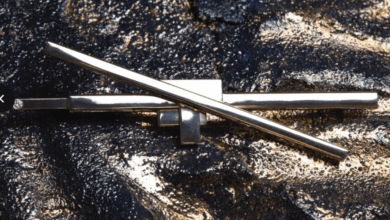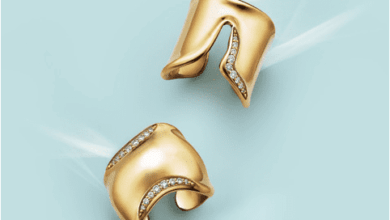Selling on returns
Resident columnist Leonard Zell explores how your sales assistants should respond to returns, and turn them into a new selling opporunity

Register to get 1 more free article
Reveal the article below by registering for our email newsletter.
Want unlimited access? View Plans
Already have an account? Sign in
After the holidays most salespeople look at returns as a negative. They hope the other salesperson gets that customer. However, when they have to wait on that customer and hear: “I would like to return this,” they have trouble hiding their feelings and it shows on their face. It needn’t be that way. Instead of looking at returns and exchanges in a negative way, look at them as a selling opportunity.
The return can be handled two different ways:
- By a salesperson who lets his smile drop as soon as he hears the word, ‘return’ and then asks a defensive question such as: “Is there anything else I can show you?”
- Or the professional sales person who keeps his smile, never asks a question, only makes positive statements and is thinking way ahead, not only of an exchange, but creating an add-on sale and a permanent customer.
When you see this customer and display a good attitude, which means a friendly smile and a cheerful greeting, this can disarm them and make them feel obligated to exchange the gift instead of returning it. But if you let your smile drop, your customer will immediately see your change of attitude and you are in trouble.
The customer has read your negative body language, just like you read theirs. When she sees you hesitate, and your smile drops, that is when she’ll say those dreaded words: “I want to return this diamond ring.” On the other hand, if you greet her with a smile and enthusiasm saying: “Fine, I’ll take care of it for you,” she will relax. That positive statement instead of asking a question will keep you smiling regardless of how you really feel. When your true emotions are negative and you feel you are on the defensive, it is imperative you keep a cheerful facade.
Now it is imperative you personalise the sale and introduce yourself because you are implying that the buck stops here and you will give this your personal attention. Use both of your names. Your first name alone implies you don’t really want to know her that well. Allow her to tell you her name and say: “Mrs. Smith, I am glad you let me know about this. Please tell me what you have in mind.” This is not a question so it cannot be answered with a “No.” Of all the possible situations this is the worst time to interrogate her and why she wants to return it. What difference does it make? You will have to accept it anyway.
Let’s review this sequence. Why was the customer so receptive? It was because you said without any hesitation: “Fine I’ll take care of this for you.” Fine, was the first key word. It showed the customer you agreed and therefore it had a neutralising effect. “Take care,” implied there wouldn’t be any resistance to this return. At that point she is comfortable telling you the reason for the return. You introduced yourself and now you can use her name and say: “Mrs. Smith, I have something else I want to show you I would like you to try on.” If the husband and wife came in together, they are even more receptive to look at something else because of your positive attitude.
Most salespeople would feel they have made a good sale, but they have not. What they did was save a sale. The professional salesperson doesn’t stop there because once the customer has selected something, he knows she is still in the mood to buy. Also, the more she buys, the happier she is and says Mrs. Smith: “I have something to show you that will enhance your diamond ring.” Please note, there was not one question asked in this sequence and everything was said with a smile. Most salespeople would never dare show an add-on sale because they felt lucky just to save the first sale.
The professional salesperson never feels defensive and looks upon every situation, regardless how negative it may be, as a selling opportunity. In addition he has made those sales more personal by introducing himself and remembering his customer’s name throughout the sale. That customer will be that salesperson’s customer forever. Now you can be that salesperson and that customer can be yours.
HOW TO AVOID RETURNS
You can and it is a very simple process. I will tell you how in three simple words, Romance the jewellery. I know what most of you readers will say: “I already do that and it makes no difference.” You may think you are romancing jewellery, but in my 30 years of teaching I have found few if any salespeople really know what romancing jewellery really is. They think by just using adjectives and their opinion that’s all that’s necessary, such as: “This is something I know you will like, isn’t it beautiful?” “This looks fabulous on you. Isn’t it gorgeous?”
This is not romancing jewellery, but the customer buys it anyway. When she sees her friend there is nothing much she can tell her, except: “What do you think of this?” Or “Jim just gave this to me.” This will not elicit the enthusiastic response she wished she had heard. Guess what? She returns the ring. Why, because the diamond ring was not sold, it was delivered. It could have been a grapefruit. There was nothing in those words relating to a diamond. Even if the word ‘diamond’ was used, it would have made little difference because there were no words relating to it.
The word ‘romancing’ as it relates to diamonds and precious gems means to paint a visual picture in your customer’s mind. The salesperson should have said, “This diamond has outstanding brilliance!”Or, “Look at the sparkle of this diamond!” If it is a precious gem: “Look at the vibrant green of this emerald!” All of these paint a picture and now the customer has something to say such as: “I just love this diamond Jim gave me, it has so much sparkle!” What can her friend say, but give an enthusiastic reply such as: “Oh yes, I can see that, it really has!” That diamond is not coming back and it never will. Why? Because her friend gave it her enthusiastic acknowledgment.
People want their jewellery to be admired. Customers take pride in their jewellery. Many of them uy it for status. That enthusiastic reply means everything to them. Make sure you sell it that way. And by the way, when was the last time your salespeople acknowledged your customer’s existing jewellery?
By Leonard Zell. This article first appeared in the January 2016 issue of Jewellery Focus







